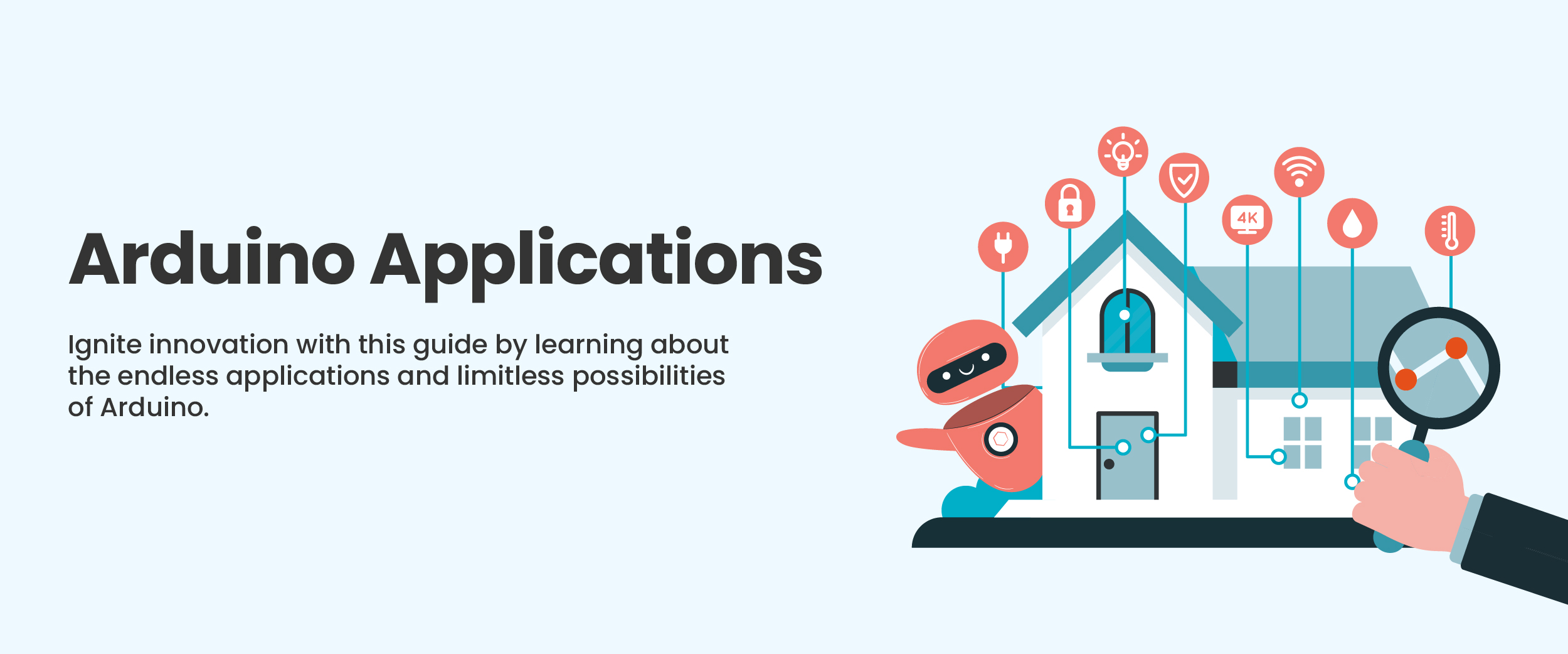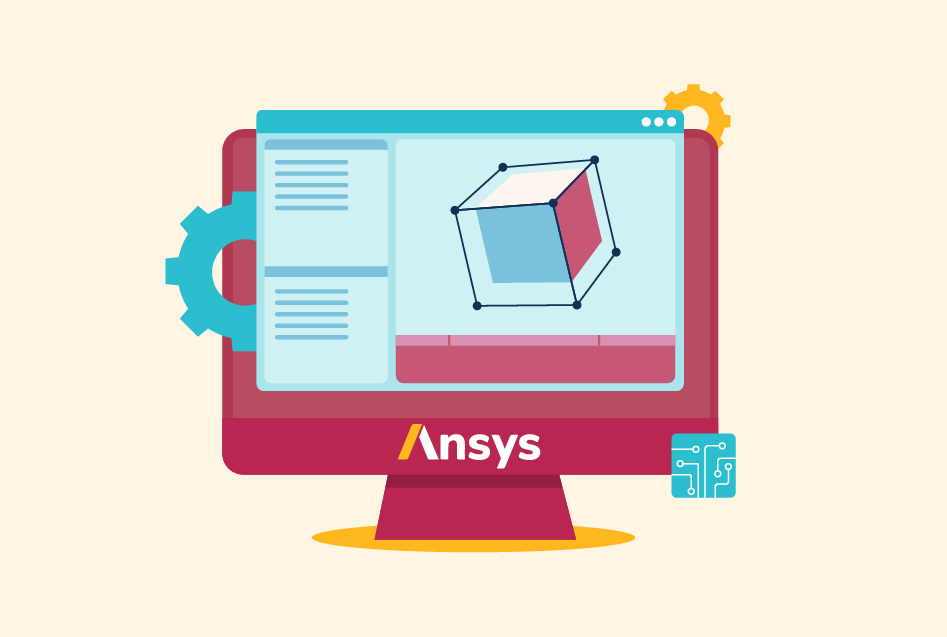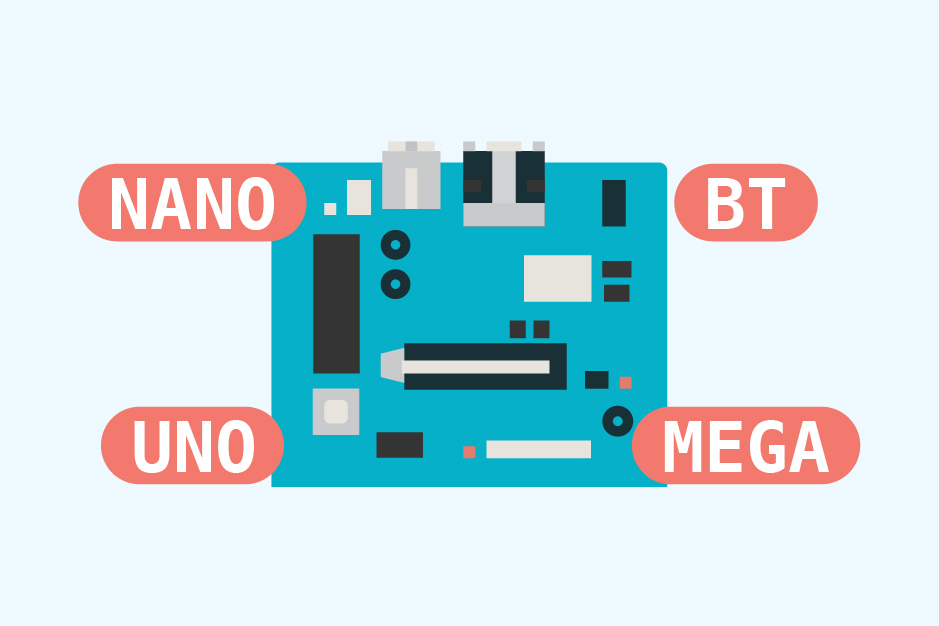Top 10 Arduino Applications – The Journey from Code to Creation
In the world of electronics, Arduino has emerged as a versatile and powerful platform that fuels innovation and creativity. With its open-source nature and user-friendly interface, it has gained immense popularity among students and professionals. In this blog post, we will delve into the uses of Arduino, exploring the diverse domains where Arduino boards have made a significant impact. From home automation to robotics and wearable technology to environmental monitoring, you will see the versatility of Arduino and its ability to bring ideas to life.
What Is Arduino?
Arduino is an open-source, interactive, and user-friendly electronics platform for making electronic projects for beginners and professionals. It offers an integrated development environment (IDE) that helps simplify the coding process. The IDE is based on C and C++ programming languages, providing a wide range of libraries and functions to develop the projects.
The Arduino platform consists of different hardware boards, also known as Arduino boards, which are equipped with microcontrollers. These microcontrollers serve as the system’s brain.
Top Arduino Applications
Given below are some of the top uses of Arduino that can be made:
1. Home Automation
One of the most prevalent applications of Arduino is in home automation systems. Arduino boards, combined with sensors, actuators, and wireless connectivity, allow homeowners to control various aspects of their living spaces with ease.
Different uses of Arduino in home automation systems include lighting and temperature control, automated security systems, and energy management. Arduino’s flexibility makes it an ideal choice for creating customized and affordable home automation solutions.
Also Read: Types of Arduino Boards
2. Robotics
Arduino plays a vital role in the realm of robotics, enabling enthusiasts and professionals to build their own robots. With Arduino, you can integrate sensors, motors, and controllers to create autonomous machines capable of performing specific tasks. From simple line-following robots to complex humanoid models, Arduino provides a robust foundation for learning and experimenting with robotics concepts.
3. Wearable Technology
By leveraging Arduino’s compact size, low power consumption, and compatibility with various sensors and displays, inventors have created wearable devices. These devices include smartwatches, fitness trackers, and garments embedded with interactive elements. Arduino’s versatility enables developers to design personalized wearable solutions that cater to specific needs and preferences.
4. Educational Teaching
Arduino’s accessibility and affordability make it an excellent educational tool for teaching electronics, programming, and problem-solving skills. Arduino-based projects provide hands-on learning experiences, encouraging students to explore technology, unleash their creativity, and develop a deep understanding of concepts. It fosters a practical and engaging learning environment for students of all ages.
5. IoT
Among the various uses of Arduino, it also plays a pivotal role in the field of the Internet of Things (IoT). Its compatibility with various sensors, connectivity modules, and cloud services makes it an ideal platform for building IoT solutions. Arduino boards can collect data from sensors, process it, and transmit it to the cloud for analysis and action. Its flexibility, affordability, and extensive community support have made it a popular choice for IoT prototyping and development.
To learn how to build more Arduino applications, you can pursue an Arduino course.
6. Data Logging
Data logging is another application where Arduino excels due to its ability to store large amounts of information on microSD cards or other storage devices. This makes it possible for users to track various environmental conditions over time, such as temperature, humidity, light levels, etc. This data could then be shared with others via the Internet or analyzed using software like MATLAB or Excel, which would allow users to identify patterns or trends within the data set that may not have been visible before.
7. 3D Mapping & Printing
3D printing has become widely popular thanks to its ability to turn ideas into tangible objects quickly at a low cost. This makes it easier to prototype products or bring new creations to life without having expensive machinery that runs only a few items at a time. By pairing an Arduino board with one printer motor driver, users have full control over their 3D printer’s movements while still maintaining accuracy when producing parts within the tight tolerances required for certain applications.
8. Automated Gardening
Automated gardening is an increasingly popular way to grow plants with Arduino. This can be done by using digital sensors and actuators that interact with a user’s environment, such as temperature or water levels. You can create an automated garden system that requires minimal maintenance by programming the Arduino to monitor and adjust these conditions according to your needs. Additionally, this technology could be used for plant monitoring and controlling irrigation systems in greenhouses or large fields of crops.
9. Smart City Projects
Arduino is a powerful tool for enabling the development of smart city projects, such as automated parking systems, traffic control solutions, or even energy-efficient lighting networks. Smart city projects are designed to improve urban infrastructure by using technology to optimize services and reduce costs. With its advanced capabilities, Arduino can be used to create sophisticated sensors that collect data from various sources within cities and process it to detect patterns, trends, and insights.
10. Drones
Drones have become increasingly popular in recent years thanks to their ability to provide aerial imaging services with minimal effort. Arduino’s ease of use allows users to customize each component according to their exact needs while also providing support for wireless communication protocols like Wi-Fi or Bluetooth. This provides users with the ability to build custom drones tailored to specific applications, such as agriculture monitoring, search and rescue operations, and more.
Conclusion
The versatility of Arduino has led to the development of several innovative applications across various domains. It helps turn ideas into reality. With Arduino applications, the possibilities are truly endless, and its impact on the world of electronics continues to grow, shaping the future of technology.
Check out this guide about the different types of Arduino boards to boost your knowledge of Arduino.
FAQs
Some of the real-life applications are motion sensors, temperature sensors, light sensors, wearable devices, etc.
Arduino Uno is the most popular and widely used development board. It is powered by an ATMega328P microcontroller.
Arduino is widely used in IoT applications for collecting sensor data, processing it, and transmitting it to the cloud for analysis and control, enabling the development of smart and connected devices and systems.







